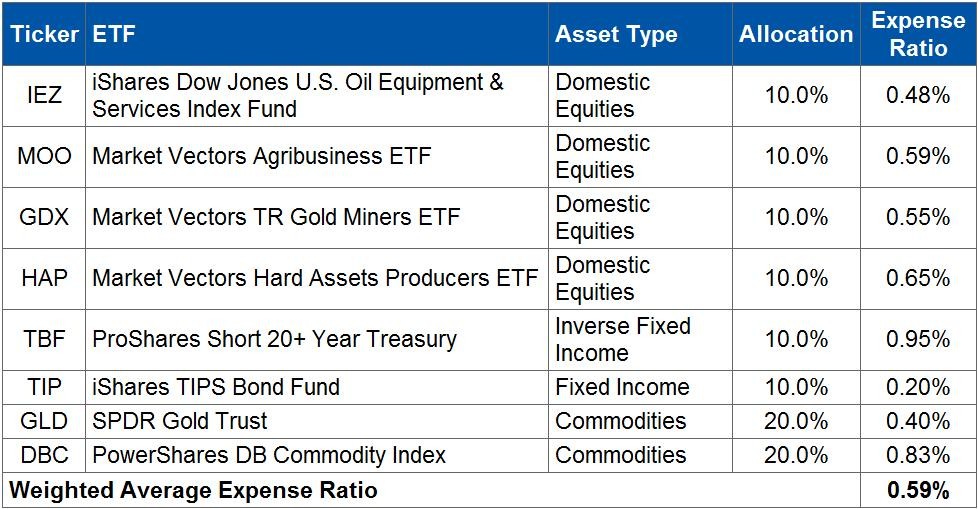How To Build an ETF Portfolio
Post on: 1 Июнь, 2015 No Comment

How to Build an ETF Portfolio
Here at The Motley Fool, we do our best to help you find the right stock picks for your portfolio. But investing in individual companies has its downsides. For example, building a diversified stock portfolio involves making numerous trades, resulting in trading fees that really eat into your savings. It can also be a big task to choose which names to hold.
Building an ETF portfolio can help solve those problems. But what’s the best approach to take when investing in ETFs? Below are three rules you should always follow:
1. Limit the number of holdings
We’ve all heard how important it is to have a diversified portfolio; holding lots of different stocks and funds is supposed to reduce risk. But ETFs already have lots of holdings within them, so you really don’t need to hold ETFs at all. If you want a portfolio of Canadian equities, U.S. equities, international equities, and bonds, then four ETFs should be enough. This will save you a few dollars on trading fees, and make managing your portfolio far easier.
2. Limit exposure to Canada
In Canada, we certainly have a lot to be proud of. But our stock market index, which is heavily weighted in just three sectors, is not one of them. Financials, energy, and materials combine for over 70% of the iShares S&P/TSX Capped Composite Index ETF (TSX: XIC). This does not provide you with a lot of diversification, and worst of all, these industries all tend to be very cyclical.
So your best bet is to get plenty of exposure to international equities. But when you do, make sure to follow step number 3.
3. Limit exposure to foreign currencies
If you’re holding lots of investments outside of Canada, you get a boost when the Canadian dollar goes down in value. But problems can occur if you have too many holdings in foreign currencies, and the CAD goes up; this can really eat into your returns.
Fortunately Canada’s top ETF providers offer ETFs that are hedged back to the Canadian dollar. So you can hold international stocks without sweating the forex rates.
So what should you hold?
Both iShares and BMO offer very similar ETF products, with similar fees. The iShares XIC product mentioned above is perfect for investing in Canadian equities, as is the BMO S&P/TSX Capped Composite Index ETF (TSX: ZCN) .
For U.S. Equities, it’s either the iShares S&P 500 Index ETF (CAD-Hedged) (TSX: XSP) or BMO S&P 500 Hedged to CAD Index ETF (TSX: ZUE). For international equities, either the iShares MSCI EAFE Index ETF (CAD-Hedged) (TSX: XIN) or BMO MSCI EAFE Hedged to CAD Index ETF (TSX: ZDM) would do.
For the safer part of your portfolio, most simple bond ETFs are good enough. There are also plenty of other choices like GICs, savings accounts, and insurance products. With rates so low nowadays, there isn’t a lot of difference between the different options.
Too often individual investors go with investment strategies that are either too complicated or too expensive. Or both. But by keeping it simple, and following the rules above, you can get a market rate of return without paying through the roof. As an added bonus, it’s a very low-maintenance approach.
Looking for more exposure to the U.S. Here are 3 U.S. stocks EVERY Canadian should own
Looking to expand your portfolio’s horizons? The Motley Fool has put together a special FREE report featuring 3 U.S. Stocks Every Canadian Should Own. To get the names and ticker symbols of these three stocks, just click here to access your free copy!
Fool contributor Benjamin Sinclair holds no positions in any of the stocks mentioned in this article.
Here at The Motley Fool, we do our best to help you find the right stock picks for your portfolio. But investing in individual companies has its downsides. For example, building a diversified stock portfolio involves making numerous trades, resulting in trading fees that really eat into your savings. It can also be a big task to choose which names to hold.
Building an ETF portfolio can help solve those problems. But whats the best approach to take when investing in ETFs? Below are three rules you should always follow:














